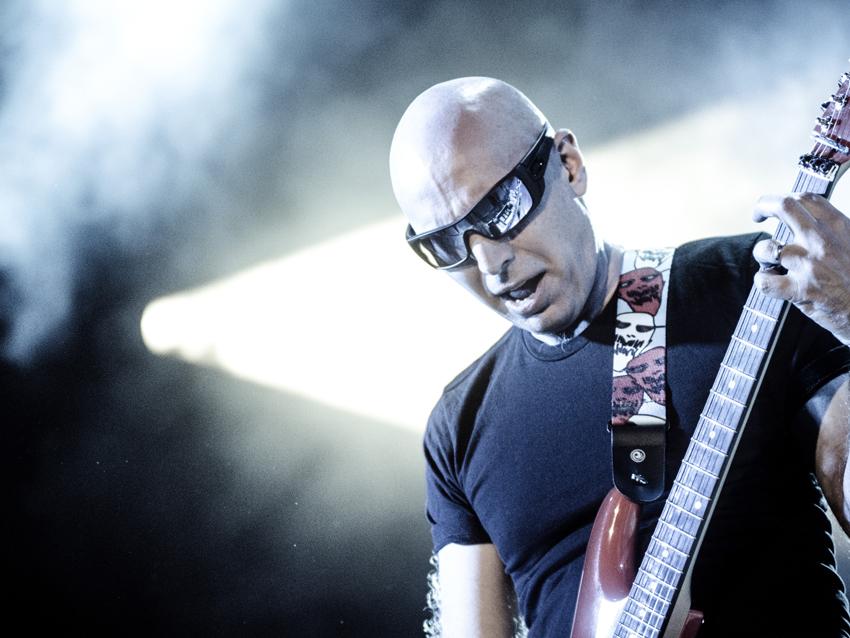
Joe Satriani on his upcoming Unstoppable Momentum US tour
On August 29th, in San Diego, CA, Joe Satriani kicks off a 48-date, two-month tour of the US, his most extensive such trek ever. The guitar icon will be performing nearly all of the songs from his recently released 14th solo album, Unstoppable Momentum, as he did on a just-completed swing through Europe.
“It never ceases to amaze me how an album seems to take on a new meaning when you start playing it live," Satriani says. "Of the songs from the new record, the crazy parts got crazier, and the sweeter stuff got sweeter. Everything has more punch, musically and emotionally. The guys in the band have really been delivering all of the nuances and the fire."
Returning on keyboards and guitar is longtime Satriani band mate Mike Keneally, but the rhythm section is comprised of two new players in Satch's universe, bassist Bryan Beller and drummer Marco Minnemann, who, when schedules permit, also perform with guitarist Guthrie Govan in the progressive rock band The Aristocrats.
"Bryan and Marco have been such a joy," says Satriani. "I hadn't played with them before rehearsals for the tour, but I checked out their DVDs, and I could certainly tell that they had all the abilities and then some. And watching their clips on YouTube was just hysterical – they’re playing all of this impossible music, and yet they’re laughing and having a great time. That was certainly a good indicator for me. They had confidence, charisma and all of the things you'd want when you’re putting together a live band.”
Satriani is thinking of adding several catalogue songs to the set for his fall run, such as Mystical Potato Head Groove Thing (from 1989's Flying In A Blue Dream) and the title track to 1995's Time Machine. “I’m also toying with the idea of bringing in my very first version of a song called Luminous Flesh Giants that nobody ever heard," he says. "It was done by myself and producer Eric Valentine, prior to the [1995] eponymous album, which Glyn Johns produced. That could be pretty interesting."
Several days before the tour starts, the guitarist will reconvene with Keneally, Beller and Minnemann to work out a new setlist, a process Satch calls "a fluid, work-in-progress kind of thing. Certain songs I always do, and luckily, over the course of 14 albums, I have some really great cornerstones that people expect when they come to see me. It’s hard, though – if I picked a song from each album, that’s a big chunk of the set. Something’s always gotta give. Having too many songs that people love – what a problem to have, you know?”
On the following pages, Satriani discusses the songs from Unstoppable Momentum and talks about how each one has transcended from the studio to the stage. For complete information and details on tickets for the North American tour, which starts in San Diego, CA, and hits cities such as Los Angeles, Denver and Dallas, among others, visit Satriani's official tour page.
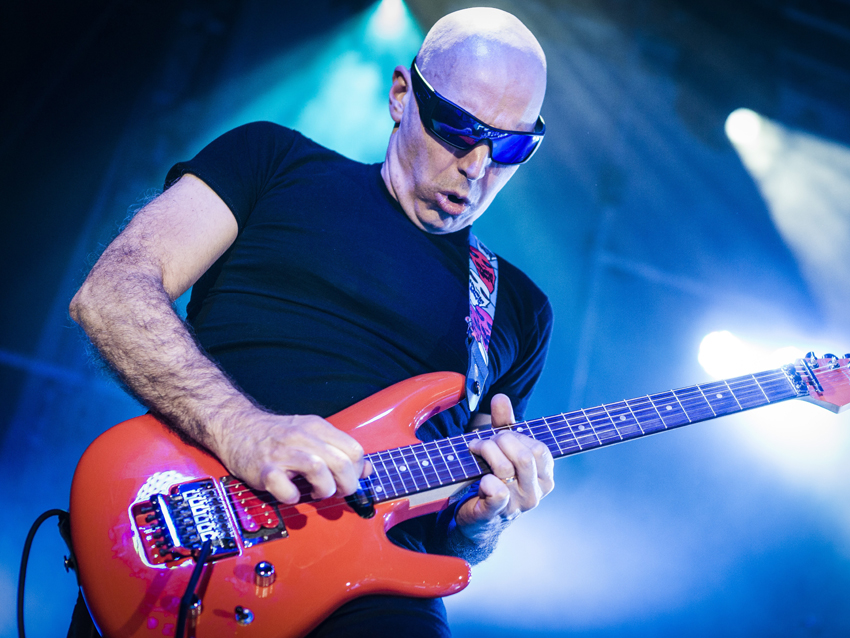
Unstoppable Momentum
“I love this song. It puts a smile on my face like no other song right now – I don’t know why that is. I just start playing that riff, and I get excited.
“The guys have a slightly different way of playing it. Mike and I are pretty busy with our melodic parts, especially Mike, who has this relentless arpeggio thing going; then he switches to guitar and plays harmonies with me. It’s a lot of fun when he does that, actually. In addition to being a brilliant keyboard player, he's also a great guitarist.
“The ending is a terrific spot for Marco to go crazy – and he does! [Laughs] My music is a lot more strict and organized than the stuff The Aristocrats play – he has a lot more outside stuff to do in that band – so it’s cool to give him a place to just go with it. The song is a real rush.”
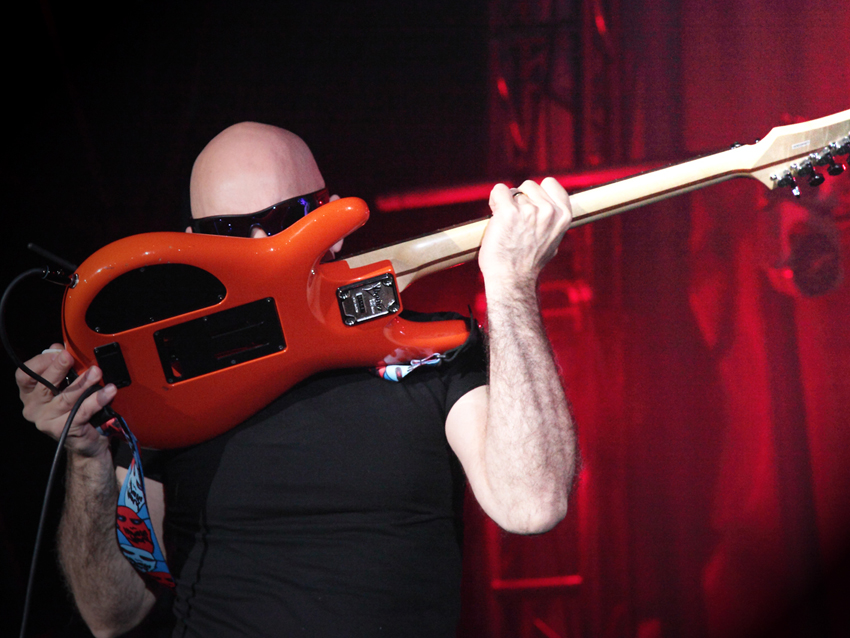
Jumpin' In
“We did something that was probably the oddest thing, starting with a song that was deep in the set, and that became our opening song. We wanted to shake ourselves up. Doing Jumpin’ In was strange for me because it starts with a very dry guitar, and I thought, ‘That’s so radical,’ because I always begin with something pretty drifty.
“It really worked. It took a while to get over it, but I found that the experience of hearing a very dry guitar from the monitors was incredibly stark sounding. You know, the people in the audience hear it quite differently – they’re hearing the house, the PA and the perfect mix. Eventually, I hear that when the crew does videos or even when I see fan videos.”
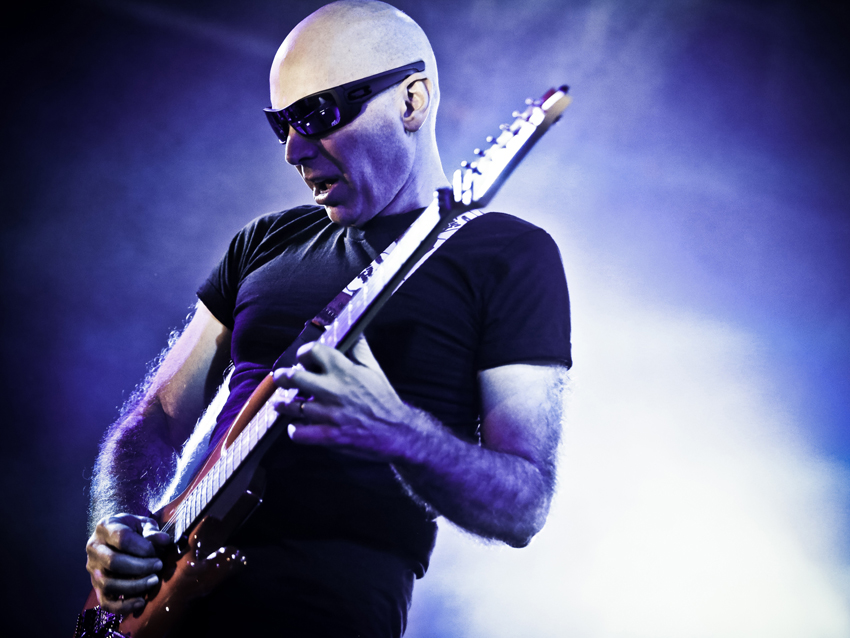
Jumpin' Out
“We started doing it right out of Jumpin’ In, and then we changed things up. Actually, the song got dropped during the last week of the tour. The funny thing is, the song is extremely improvised. Even in rehearsals, I told the guys, ‘No matter what I play, you just play your parts and I’ll be there.’
“That’s the way it is on the record, too: It’s an improv, and a song was built around it. So I thought, ‘Well, why play it the same way all the time?’ I think it took me until the last week of the tour where I started playing it more like on the album, and that’s when it was decided that we had to cut a song.
“Taking this one out was a good idea – sometimes you don’t want to hammer people with too much new stuff. But if I put Tim Machine in, Jumpin’ Out could return.”
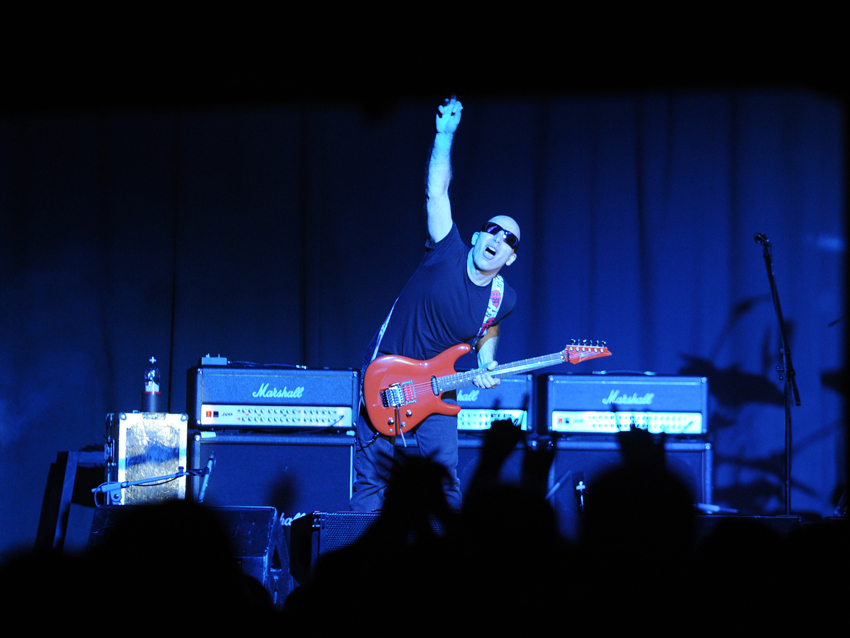
Lies And Truths
“This is another song where Marco and Mike get to improvise quite a bit. There’s a lot of parts where we all have to be together, but there’s other places that allow the guys to put their own twist on things. Marco goes out and plays something completely different and amazing every night, and we just stare at him to make sure we know where he’s heading.
“I love playing it. It’s probably one of the more well-received songs in the show, because it’s very dry and detail oriented, and people can tell that we’re focusing on one another. With A Door Into Summer, everybody’s sort of grooving and it’s a big wall of sound, so I think people get swept up in the spirit of the whole thing. With Lies And Truths, it puts your attention on these four guys wrestling this python of a song.
“The parts aren’t that crazy-difficult, but the fact that I allow everybody to improvise, that’s what introduces the danger element. That’s also what makes it fun at the end of the night, when we’re laughing about having tried something new and how it worked… Or we’re laughing at how we crashed and burned.”
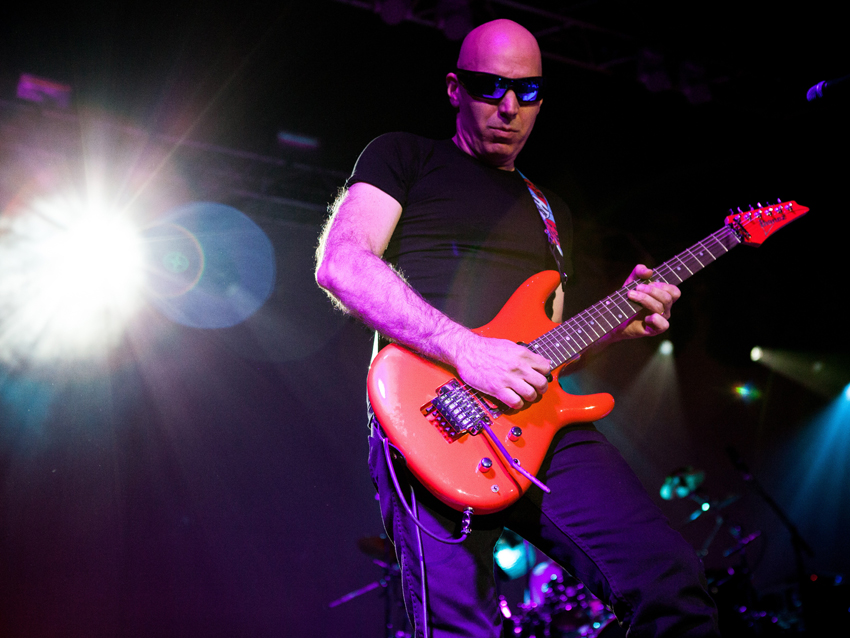
The Weight Of The World
“Great drama. In rehearsals, I remember going through every patch on the amp, every pedal, trying to figure out how to play it. The studio version has a very clean ’61 Stratocaster playing these little chords, but mainly it’s three keyboards playing the chord melody that makes up the verse.
“Then it goes into a section where you have two or three guitars playing harmonies. The transition was a little odd at first – usually, I start a song with a tone and go all the way through. That’s a fun way to do a live show, not having to worry about six different pedal settings.
“Eventually, I decided to shrink my guitar sound down and not play the whole part, and that was the key. Instead of doing the full rhythmic signature of the chord melody, I played an edited version and let Mike take over that part a little bit. Suddenly, everybody grooved. It took me about two weeks to figure it out on stage, but now it’s become one of my favorites to play, because it had so much drama.”
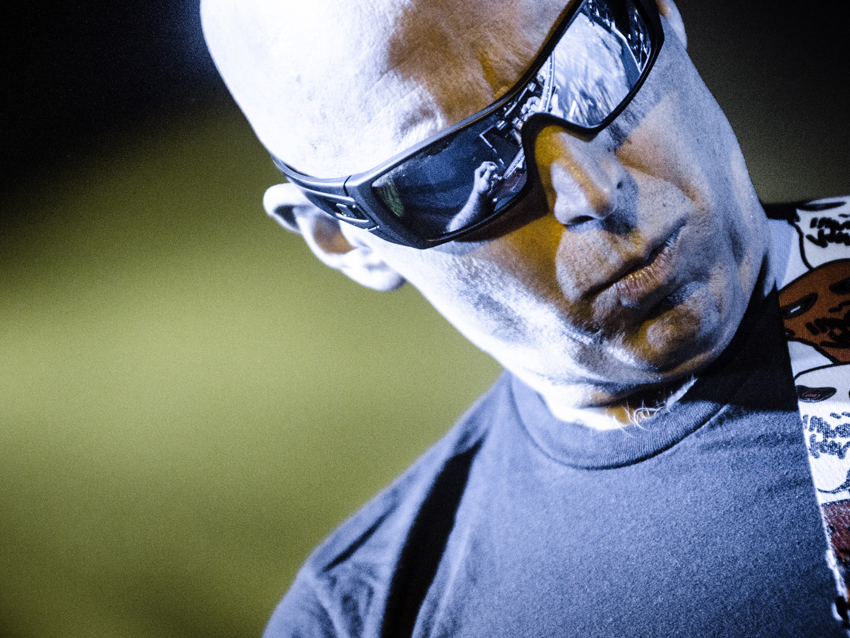
I'll Put A Stone On Your Cairn
“I love that one live. The only funny thing about it is that I have to nod and move my body to cue the timing. The recorded version on the album is free of time and was improvised, so live I have Bryan and Mike looking at me for every single chord. I’m bobbing and weaving at times when I’d like to keep the guitar absolutely still for tuning purposes.
“A funny thing happened only once: They were working on super-dramatic lighting for the opening of the song, and not only am I wearing sunglasses, but on the song before this one, it’s a blast of light. The song would end, and I’d do my little guitar knob switches and go stand in my spot. While I’m waiting for my eyes to recover, I’m going, ‘Shine the light, shine the light, shine the light,’ because that’s where I kind of cop the flute pattern.
“Mike comes in and he does his little French horn thing, and I’m expected to play this flute thing. One night, I’m waiting and waiting for the light, and it’s not coming up. So I decided to take a guess, and of course I was a fret off – this really heinous flat-nine came wafting out through the theatre, and I thought, ‘OK, I have to talk with the spotlight operator.’
“Other than that, the song has been great live, very cathartic and emotional, and the transition into the next song is always very magical. I love working with the Sustainiac pickup, too.”

A Celebration
“Even though I love the song, it was the first one that I wanted to drop. It would come up in the setlist, and I’d go, ‘Really?’ It just never felt like there was a right moment to play it. But I’d be out on the street, and fans would come up and say things like, ‘When you played that song, it really made my night.’ So I’d think, ‘Wow, that’s really weird,’ because I was having the total opposite experience with it.
“I talked it over with the other guys, and I found that my experience of playing a song kind of by myself while they’re playing big things – I’m doing these skinny little melody lines, and somebody like Mike Keneally is doing huge chords, and Marco is pounding out these massive rhythms – it makes me feel somewhat alone and unable to engage with the audience. But the guys in the band don’t feel that way; to them, the song is big, and it works on every level for them.
“It’s important that everybody in the band feels good with every song they’re playing live. So, finally, I said, ‘I love this song when I hear it on the record, and it’s great when I’m humming it to myself, but playing it live is messing with my mind.’ [Laughs] I said, ‘Let’s just try not doing it and see what happens.’ It was a bit of a selfish move, but you know, we have other songs that share that tempo. Taking it out removed that weird little mental thing in the set for me.
“It could return when we go back out – you never know. When we get back together, if one of the guys says, ‘Hey, why don’t we put A Celebration back in the show?’ we just might do it.”
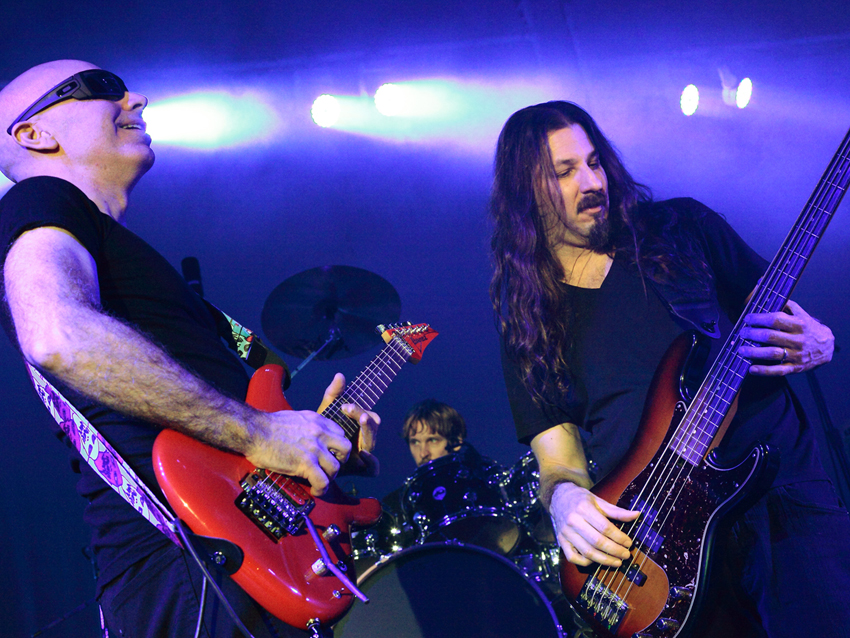
A Door Into Summer
“Wow, it pounds! Some people might think that Marco and Bryan don’t bring the power, but they’re capable of laying down a really comfortable, driving groove. Marco follows my melodic inflections in his own way, similar to what Vinnie [Colaiuta] did on the album, where he follows my melody.
“I love playing the piece, and I could tell that it was a big hit wherever we went. It’s one of those songs that seems to get bigger and bigger. The larger the venue, the more the song opens up. It grows in whatever environment you put it in. Who knows? If I’m doing this in 10 years, A Door Into Summer could be one of the songs I’m still playing live.”
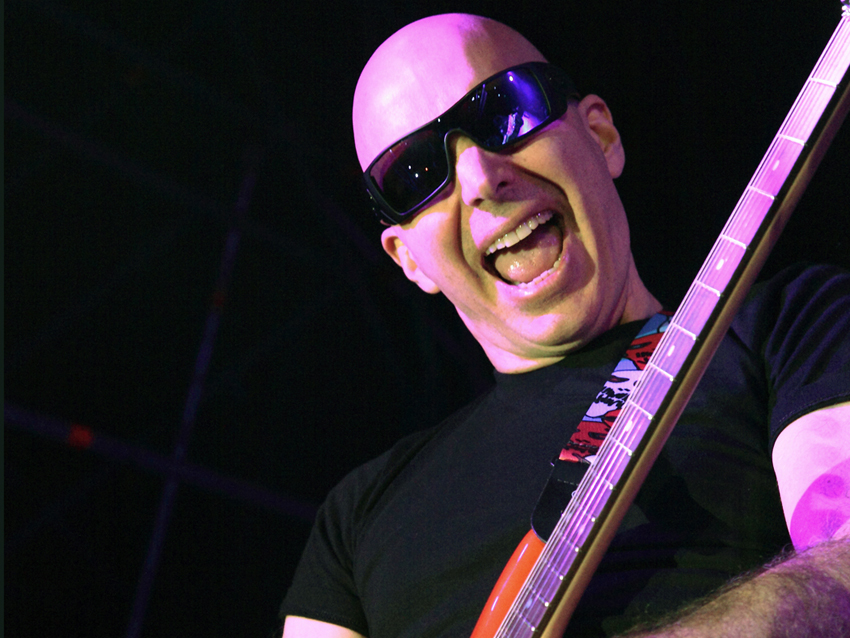
Shine On American Dreamer
“This one is so great. Once I start a tour, I don’t listen to the album anymore. It’s too disconcerting. I want to focus on these guys in the band. Who are they? What can I do with them to make these songs grow? So to get there, I have to distance myself from the album.
“I would get these comments from people after the shows: ‘Oh, man, Shine On American Dream – that song sounded so intense!’ And I’d be like, ‘Really?’ Because with things like Satch Boogie, you can feel how intense they come across because that’s how they feel from a guitarist’s point of view. There’s so much swinging and noises and stuff.
“But with Shine On, which is a very easygoing piece of music from a guitarist’s standpoint, it’s just the opposite: When people see guitar players being all busy, they think, ‘Oh, yeah, we’ve seen this before.’ They want a big block of sound and a wall of emotion, and that’s what provides the concert journey.
“So what happened was, after a couple of weeks of not playing, I started going through the set again, and while playing along with the album I thought, ‘Wow, Marco really made this more of a backbeat song.’ He pulled it back – he’s playing it just a hair slower – and in doing so, he made it heavier. That's pretty cool."
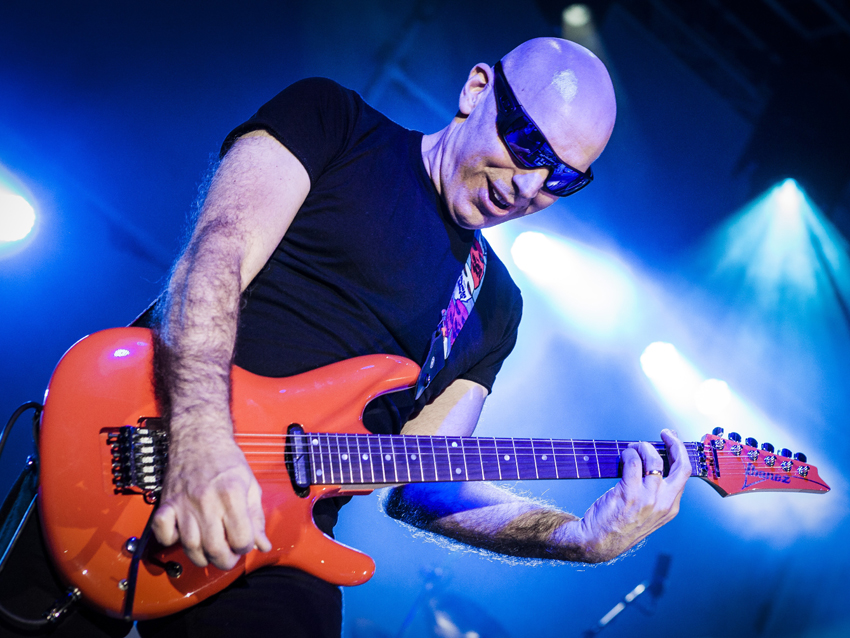
Three Sheets To The Wind
“For me, the song is kind of easy in that I’ve got some pretty well-defined parts to do; and I’m using the same guitar, same amp and same everything I used in the studio, so there’s no stretch there.
“This one is really a big Mike Keneally moment. He’s got quite a lot to do, and he’s imitating a bunch of things, but his incredible personality wins out. He has his own way of doing the hony-tonk piano and switching gears between everything – he’s really great.
“I think the song comes off a little sweeter on the album. Live, everything is fatter and heavier – it’s darker – and once again, it’s because the band is heavier.”
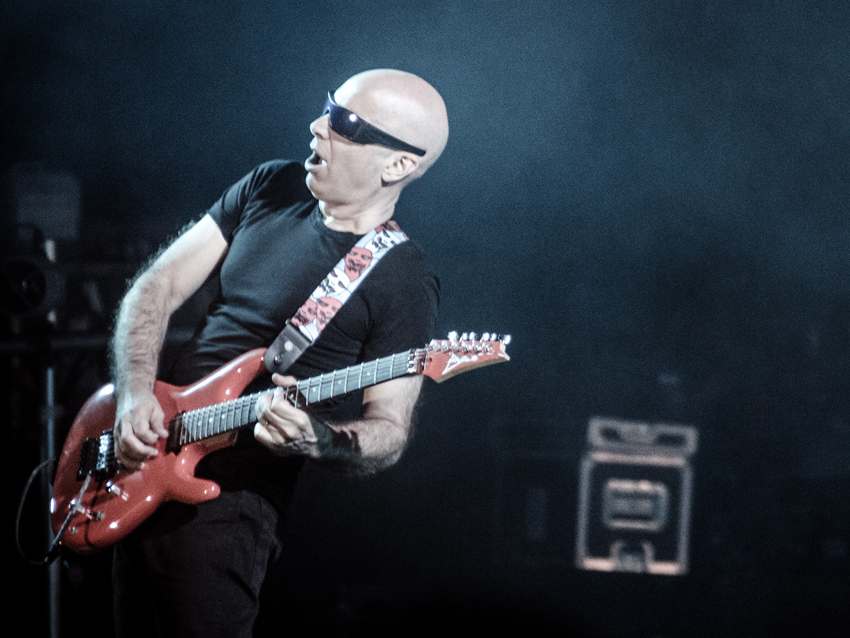
Can't Go Back
“We were playing it live, but Mike and I decided that it was too frantic for us. It’s a funny song: I listened to it in rehearsals and thought, ‘Wow, Bryan and Marco really have it nailed.’ It sounded peppy and had such a great feel. Then I heard what Mike and I were doing – we had our left hands doing this, our right hands doing that; then I’m doing a pedal dance and trying to get the call-and-response… It didn’t feel right.
“We tried it a couple of different ways, but eventually Mike and I said, ‘This isn’t fun if you and I are just stepping on pedals and looking at keyboards and having no interaction with the audience.’ We thought that there had to be a song that offered more communication with the people, and Crush Of Love came up. It’s another wah-wah song with a very expressive, laid-back melody to it, and the band is just pumping. Mike and I do a little G2 jam at the end of the night with it. He comes around with his guitar and we trade solos.
“Can’t Go Back is one of my favorite songs on the album, but it was just a bit too difficult to pull off live. Maybe it’s because we’re a new band and didn’t quite figure it out. We can go back to it and try again – we might.”

Joe is a freelance journalist who has, over the past few decades, interviewed hundreds of guitarists for Guitar World, Guitar Player, MusicRadar and Classic Rock. He is also a former editor of Guitar World, contributing writer for Guitar Aficionado and VP of A&R for Island Records. He’s an enthusiastic guitarist, but he’s nowhere near the likes of the people he interviews. Surprisingly, his skills are more suited to the drums. If you need a drummer for your Beatles tribute band, look him up.
“Every note counts and fits perfectly”: Kirk Hammett names his best Metallica solo – and no, it’s not One or Master Of Puppets
“I can write anything... Just tell me what you want. You want death metal in C? Okay, here it is. A little country and western? Reggae, blues, whatever”: Yngwie Malmsteen on classical epiphanies, modern art and why he embraces the cliff edge
“Every note counts and fits perfectly”: Kirk Hammett names his best Metallica solo – and no, it’s not One or Master Of Puppets
“I can write anything... Just tell me what you want. You want death metal in C? Okay, here it is. A little country and western? Reggae, blues, whatever”: Yngwie Malmsteen on classical epiphanies, modern art and why he embraces the cliff edge









